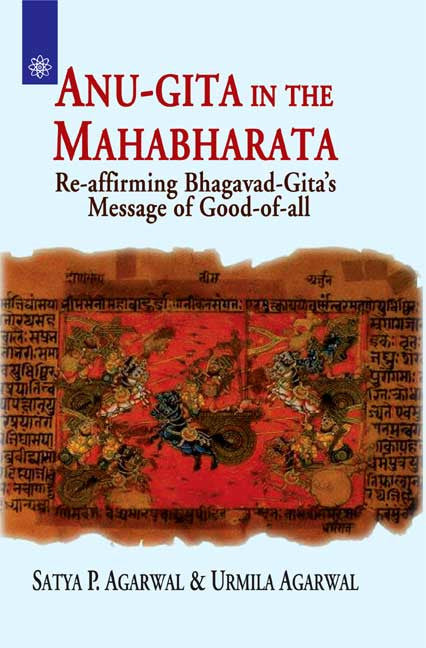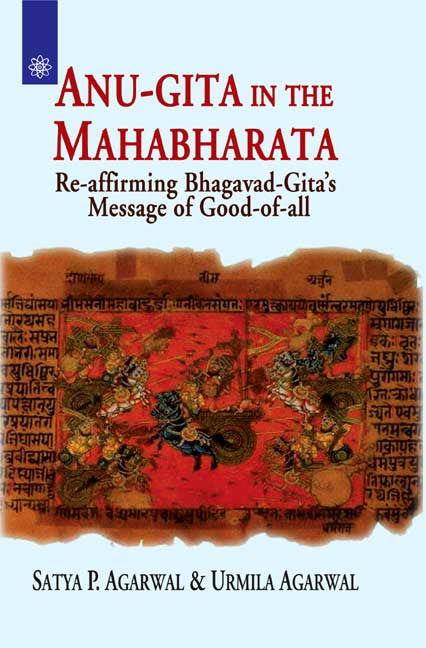Anu-Gita in the Mahabharata: Re-affirming Bhagavad-Gita's Message of Good-of-all
![]() 100% Genuine New Books
100% Genuine New Books
![]() Fast Shipping with Tracking Number
Fast Shipping with Tracking Number
Secure Payments via UPI, Cards & Wallets
![]() Trusted Support & Easy Returns
Trusted Support & Easy Returns
Anu-Gita in the Mahabharata: Re-affirming Bhagavad-Gita's Message of Good-of-all - Hardcover is backordered and will ship as soon as it is back in stock.
ISBN : 9788178224688, 8178224682
Year of Publication : 2014
Edition : 1st
No. of Pages : 170
Language : Sanskrit & English
Condition : New
Publisher: Motilal Banarsidass Publishing House
Free shipping on orders over Rs. 249
Free shipping on orders over Rs. 249
We offer free shipping on orders above Rs. 249 in India. For orders below this threshold, a nominal shipping fee may apply, which will be clearly indicated during the checkout process.
How long will it take to receive my order?
How long will it take to receive my order?
The delivery time varies depending on your location. Generally, orders are processed and shipped within 1-3 business days. Once shipped, you can track and expect your order to arrive within 3-7 business days (the duration may vary depending on your location). For more information, please refer to our shipping policy.
Chat with a Real Person
Chat with a Real Person
WhatsApp chat is dedicated to assisting with after-sales queries regarding delivery, returns, and payments. Click below to initiate chat with us on WhatsApp:
[Bookstaa WhatsApp Chat].
For all other inquiries, please visit our customer support page or email us at support@bookstaa.com.
Couldn't load pickup availability
Description
Description
The purpose of writing this book is to make available to English-knowing readers, an easyto-read version of Anu-Gita. Although Anu-Gita is an important part of the Maha-bharata, it has so far not been presented in a simple form to common people, with the result that most people do not even
know that such a book exists. The prefix 'Anu' denotes 'after', so Anu-Gita literally means 'Gita occuring after'. In the Mahabharata, Bhagavat-Gita occurs in Parva No. 14. (In all, there are 18 Parvas in the Mahabharata).
It is well known that the Gita was taught by Lord Krishna to Arjuna on the battle field of
Kuruksetra. So it was a time of crisis at the time of Anu-Gita. In fact, the Mahabharata war was over and peace was established in the Kingdom, under the rule of Yudhisthira (whom every one including Arjuna supported).
But the format of Anu-Gita is different from that of the Gita. In the Gita, there was dialogue between Krishna and Arjuna. On the other hand, in Anu-Gita, Krishna makes use of three ancient
dialogues. Because of this, Anu-Gita has a lot of repetitions, which have made it longer than the
Gita. For example, Anu-Gita has thirty-six chapters (compared to eighteen chapters in the Gita), and 1040 shlokas (compared to 700 shlokas in the Gita). In order to present Anu-Gita in an easy-to-read version, the authors have omitted the repetitions, and have selected 400 shlokas. But they have retained all the main teachings of Anu-Gita.
Most people (even in India) have not heard the name of Anu-Gita. This is so because, although Anu-Gita is an important part of the Mahabharata, no scholarly study of it, in a simple language, has so far been published. This gap will be filled by this pioneering book, which explains under what circumstances was the Gita taught by Lord Krishna to Arjuna, for the second time. This book is divided into two parts. Part I presents the Sanskrit-shlokas of Anu-Gita, along with their translation in simple English. Part II explains the main points of similarity, as well as dissimilarity, between Gita and Anu-Gita.
Review(s)
About the Author(s)
Satya P. Agarwal acquired expertise in social science research, at U.S. Universities, in the 1950's. After nearly four decades of interdisciplinary study and applied research at the global level, they brought out the award-winning book "The Social Role of the Gita: How and Why. "Thus began a series of innovative research publications based on Sanskrit and Hindi texts. The present publication is No.15 in the series.
About the Publisher

Motilal Banarsidass Publishing House (MLBD)
Motilal Banarsidass Publishing House, popularly known as MLBD, is one of the oldest and most prestigious publishing houses in India, established in 1903.
With over a century of legacy, MLBD has been at the forefront of publishing scholarly works in the fields of Indology, Sanskrit, philosophy, religion, spirituality, yoga, Buddhism, and Jainism.
Renowned for its authenticity and academic rigour, MLBD's books are trusted by researchers, scholars, and readers across the globe.
With more than 5,000 titles in circulation, MLBD continues to uphold its commitment to preserving and promoting India’s rich cultural and philosophical heritage.
Bookstaa is an authorized distributor of MLBD books, ensuring 100% genuine and original publications for our readers.

